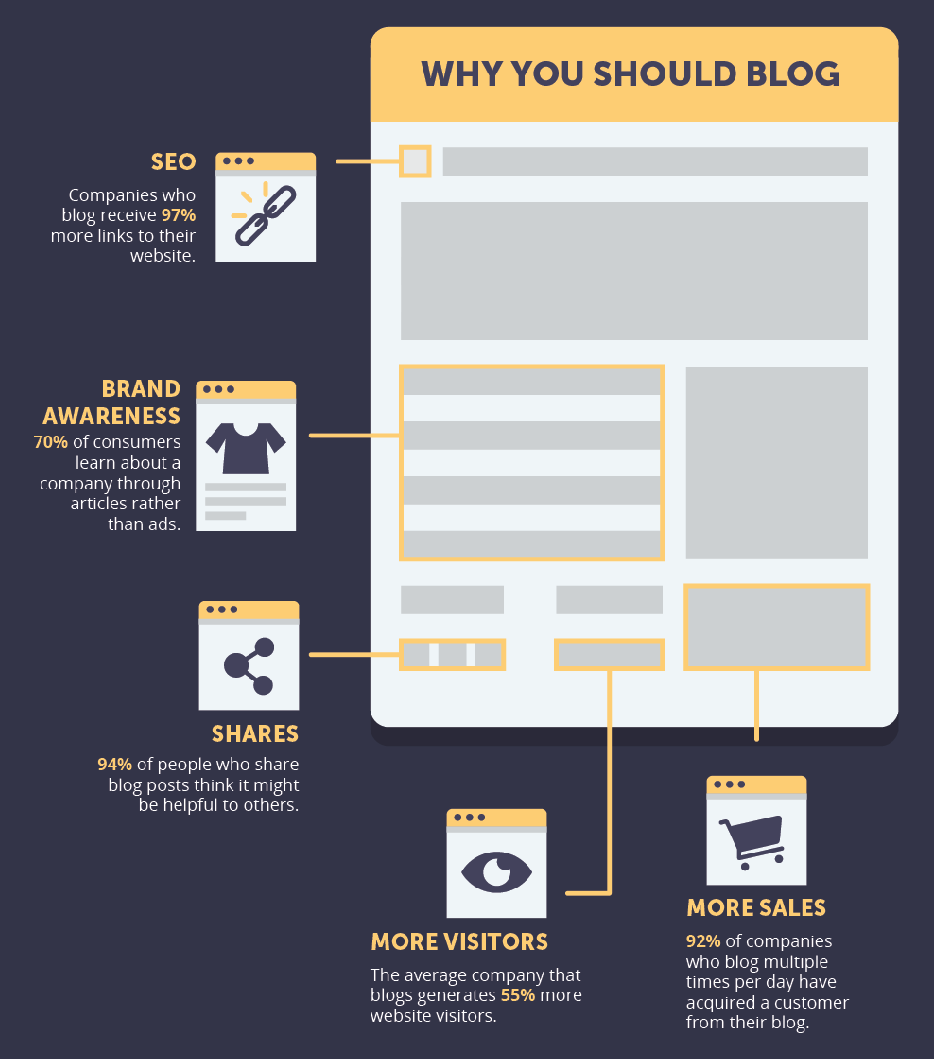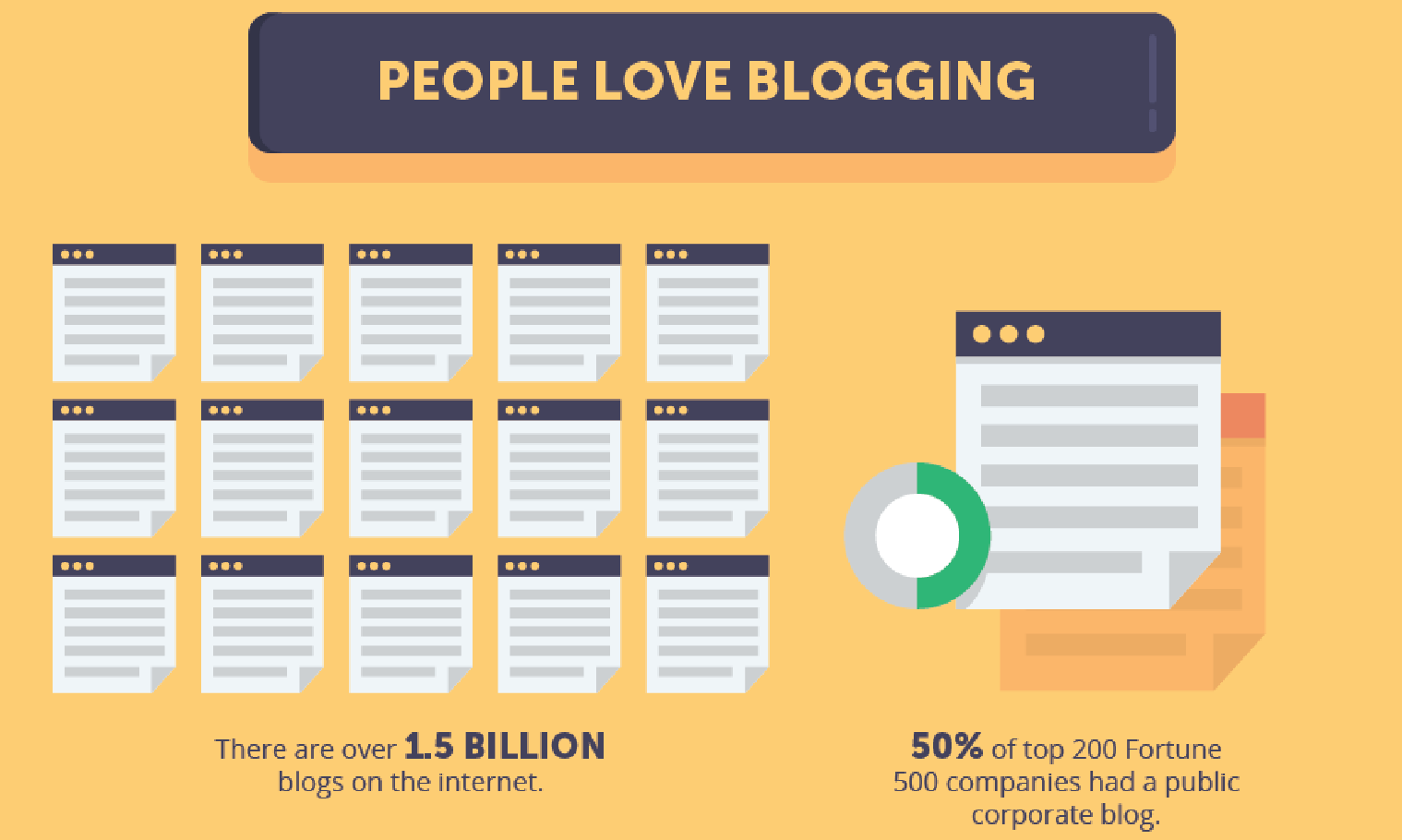Make sure your blogging strategies are promoting your website and pushing visitors your way. Don’t waste time and energy writing posts that don’t engage – check out the infographic that talks you through the state of the blog industry, from creation to the way forward. Josh Wardini uses the insight to show how to boost your blog’s performance.
Blogging is an up-and-coming industry and, judging by the numbers, it is not likely to disappear any time soon.

Click here to view the full infographic.
The 21st century saw Mashable and TechCrunch as the largest blogs. Nowadays, there are more than 30 million bloggers in the USA alone.
Small businesses have the opportunity to acquire an enormous audience with the help of blogging strategies, of course that first they need to learn how to start a blog.
Anyone can start writing a blog – and advertising products or services with genuine posts can increase visibility and revenue.
Content marketing, big data, organic search are now the trends we need to know about.
If you are or plan to become involved in the e-commerce world, these are the essential techniques to make your business thrive. But, before you dive into analysing your metrics, let’s see what successful blogging strategies involve.
Shape your blogging strategies:
A blog is the modern individual’s journal. Blogging may have begun as a creative outlet for the imaginative writers on the internet, but it is no doubt the most interesting money-making machine.
Blogging is one of the favourite pastimes of 77% of internet users. They read around ten blog posts a day.
When you have the intention of starting a blog, a subject you are vehement about is a must. You ought to love what you are talking about – offer readers reliable information and relevant content.
Your blog needs a good foundation to build your opinion on, whether it is about sports, lifestyle, digital marketing or something else.
In 2016, blogs were rated as the fifth most accurate sources of information, showing that readers don’t just visit blogs for the fun of it; they are in genuine need of some kind of advice. If you have trouble discovering what your readers and potential visitors love to read about, there are some content research tools such as BuzzSumo that can narrow down your research. So, when you hit a ‘writer’s block’, or run out of ideas, BuzzSumo can show you what kind of content was most shared on social media recently, and provide you with inspiration.
But ordinary people are not the only ones making a profit from blogging: top brands and companies have jumped on the bandwagon since blogging brings them 97% more links to their e-commerce websites. Consumers learn about products and companies through articles, which means traditional ads are less efficient.

Click image to view the infographic.
Students reading literature reviews, food enthusiasts looking for recipes and mothers seeking advice are just a small part of the audience frequenting blogs daily.
According to a recent study, brands that published more than 15 articles a month got four to five more leads than unprofessional blogs that post rarely.
Choose a blogging platform wisely
Out of 115 blogging platforms, the undeniable leader is WordPress, with 18.7 million blogs built on this software and many more to come, as some of the best web hosting companies are promoting the platform heavily.
The right blogging platform is highly customisable, affordable and SEO-friendly.
SEO is a process, so be patient and work on your website continuously before expecting results. For maximum visibility and clicks, optimise your title and add keywords and descriptions.
When you start writing, especially on a topic that means a lot, you can easily get caught in a whirlwind of ideas and prolong the blog post. However, the ideal blog post is no more than 2,100 words, so try to keep a lid on your energy! Only write down what you think is most important for the readers. Probably intimidated by lengthy blog posts, 43% of people admit to only skim-reading them.
The most engaging content on Facebook is photos, so include a photo per 150 words in a blog post. Smaller chunks of text interspersed with images or original videos are more attractive to readers.
Add share buttons and spread your work onto social media. More and more people use social media networks to learn new things and this is where your blog comes in! Republish posts and relevant content and attract a brand new audience that can link to your blog with just a click. Make some of your quotes tweetable, so more people can share them as their personal mantra.
And, while social media is the best marketing channel for your blog, don’t underestimate the power of email. Stay in touch with your subscribers by sending them emails full of social contests and exclusive content.
Learn to work with others
Many bloggers are recognising the benefits of guest posts and collaborating with other bloggers. Both parties can profit, as you’ll share each other’s visitors. Mention and include links to relevant blogs and websites in your domain and see how your traffic increases.
Having in mind that 79% of online shoppers spend most of their time reading and researching products, you can work with brands to promote their products. However, this needs to be done seamlessly, so that your audience doesn’t feel you are feeding them lies.
Don’t forget to always check your analytics, since they allow you to change and grow according to your readers’ characteristics and preferences.
While there’s no one definite recipe for a successful blog with a great deal of traffic, these tips and tricks are bound to make the path toward successful blogging strategies easier.
Have an opinion on this article? Please join in the discussion: the GMA is a community of data driven marketers and YOUR opinion counts.








Leave your thoughts